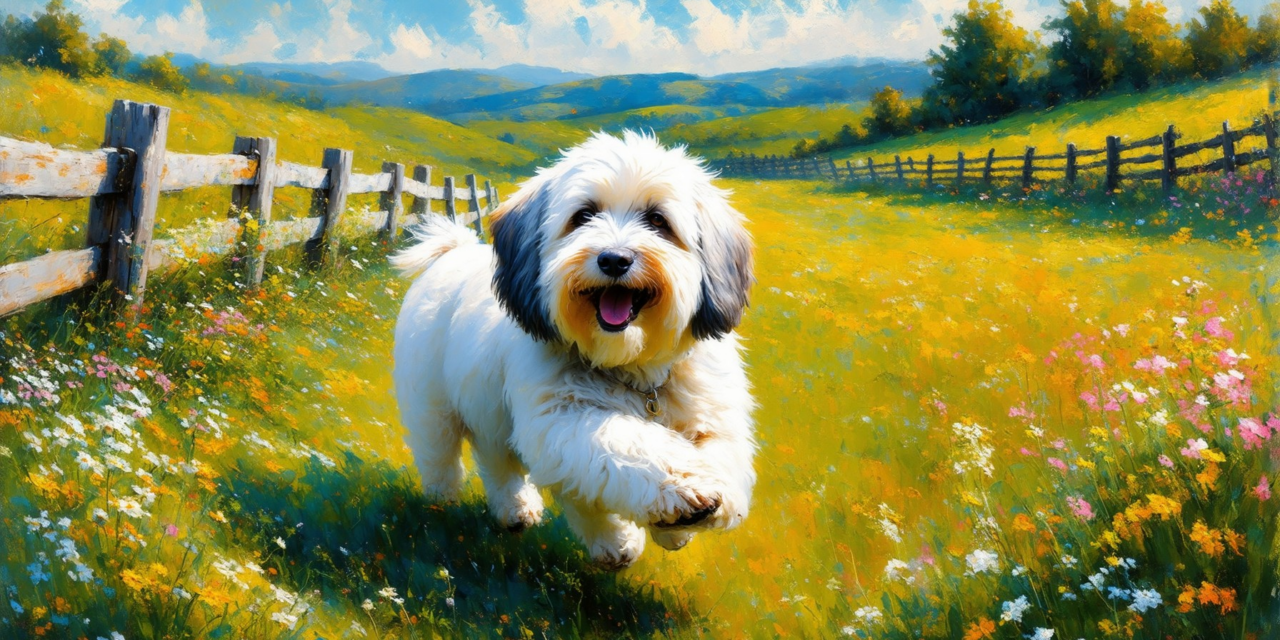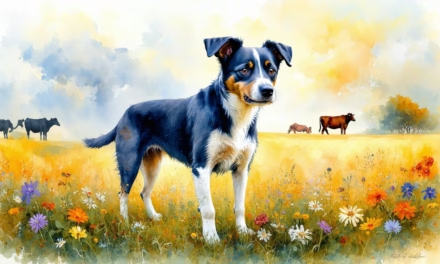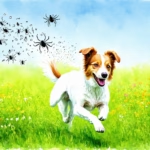Key Takeaways
- Old English Sheepdogs are affectionate, intelligent, and playful, making them excellent family pets.
- Regular grooming is essential due to their long, shaggy coat, requiring at least two to three brushings per week.
- This breed needs ample exercise and mental stimulation to prevent boredom and behavioral issues.
- They adapt well to various living environments but thrive in homes with space for play and activity.
- Potential owners should be aware of health considerations, including hip dysplasia and eye conditions common in the breed.
- Old English Sheepdogs can be vocal; managing their barking through training is important for a harmonious home.
- Consider adopting from reputable shelters or breeders to ensure the health and well-being of your new pet.
Welcome to our comprehensive guide on the English Sheepdog, a breed renowned for its distinctive appearance and affectionate nature. In this article, we will explore whether these charming dogs are the perfect pet for you by delving into their unique characteristics, temperament, and care requirements. We will answer pressing questions such as, Are English sheep dogs good pets? and Do sheep dogs bark a lot?, while also weighing the pros and cons of owning an Old English Sheepdog. Additionally, we will provide essential maintenance tips, including grooming needs and shedding patterns, to help you understand the commitment involved in caring for these lovable companions. Whether you’re considering adopting an Old English Sheepdog or simply want to learn more about this delightful breed, our insights will guide you through the journey of understanding their personality traits, pricing, and where to find reputable English Sheepdog breeders. Join us as we uncover the many facets of the Old English Sheepdog and determine if they are the right fit for your family.
Understanding the English Sheepdog
Are English Sheepdogs Good Pets?
The Old English Sheepdog is an exceptional breed known for its intelligence, affectionate nature, and playful demeanor, making it a wonderful family pet. Here are key considerations regarding their suitability as pets:
- Temperament: Old English Sheepdogs are known for their gentle and friendly disposition. They are highly social animals that thrive on companionship and are particularly good with children, although supervision is advised due to their size and energy levels.
- Training and Intelligence: This breed is highly trainable due to its intelligence. Consistent training and socialization from a young age can lead to a well-behaved dog. Positive reinforcement techniques work best, as they respond well to praise and rewards.
- Exercise Needs: Old English Sheepdogs require regular exercise to maintain their physical and mental health. Daily walks, playtime, and mental stimulation through activities like agility training or obedience classes are essential. Engaging in these activities can also strengthen the bond between the dog and its owner.
- Grooming Requirements: Their long, shaggy coat requires regular grooming to prevent matting and maintain skin health. Weekly brushing and occasional professional grooming are recommended to keep their coat in optimal condition.
- Health Considerations: Like all breeds, Old English Sheepdogs are prone to certain health issues, including hip dysplasia and eye conditions. Regular veterinary check-ups and a balanced diet are crucial for their long-term health.
- Living Environment: They adapt well to various living situations, but they thrive in homes with ample space for them to roam and play. A secure yard is ideal, as they enjoy outdoor activities.
In summary, Old English Sheepdogs can be excellent pets for families and individuals who can provide them with the attention, exercise, and care they need. Their affectionate nature and intelligence make them a joy to have as companions. For more detailed insights on pet care and training, resources such as the American Kennel Club (AKC) and the American Veterinary Medical Association (AVMA) can provide valuable information.
Overview of the Old English Sheepdog Breed Characteristics
The Old English Sheepdog breed is characterized by its distinctive appearance and unique traits. Here are some notable characteristics:
- Size: Old English Sheepdogs are large dogs, typically weighing between 60 to 100 pounds. Their robust build and thick coat contribute to their impressive stature.
- Coat: They are known for their long, shaggy fur, which can come in various shades of gray and white. This coat not only adds to their charm but also requires regular grooming to prevent tangles and matting.
- Temperament: As mentioned earlier, these dogs are friendly, affectionate, and intelligent. They are known for their loyalty and protective nature, making them excellent family companions.
- Energy Level: Old English Sheepdogs are energetic and require regular exercise. They enjoy outdoor activities and thrive in environments where they can run and play.
- Life Expectancy: The average lifespan of an Old English Sheepdog is around 10 to 12 years, which is typical for large dog breeds.
Understanding these characteristics can help potential owners decide if the Old English Sheepdog is the right fit for their lifestyle. For more information on finding reputable English Sheepdog breeders or exploring adoption options, consider visiting resources like Pet Adoption Resources.
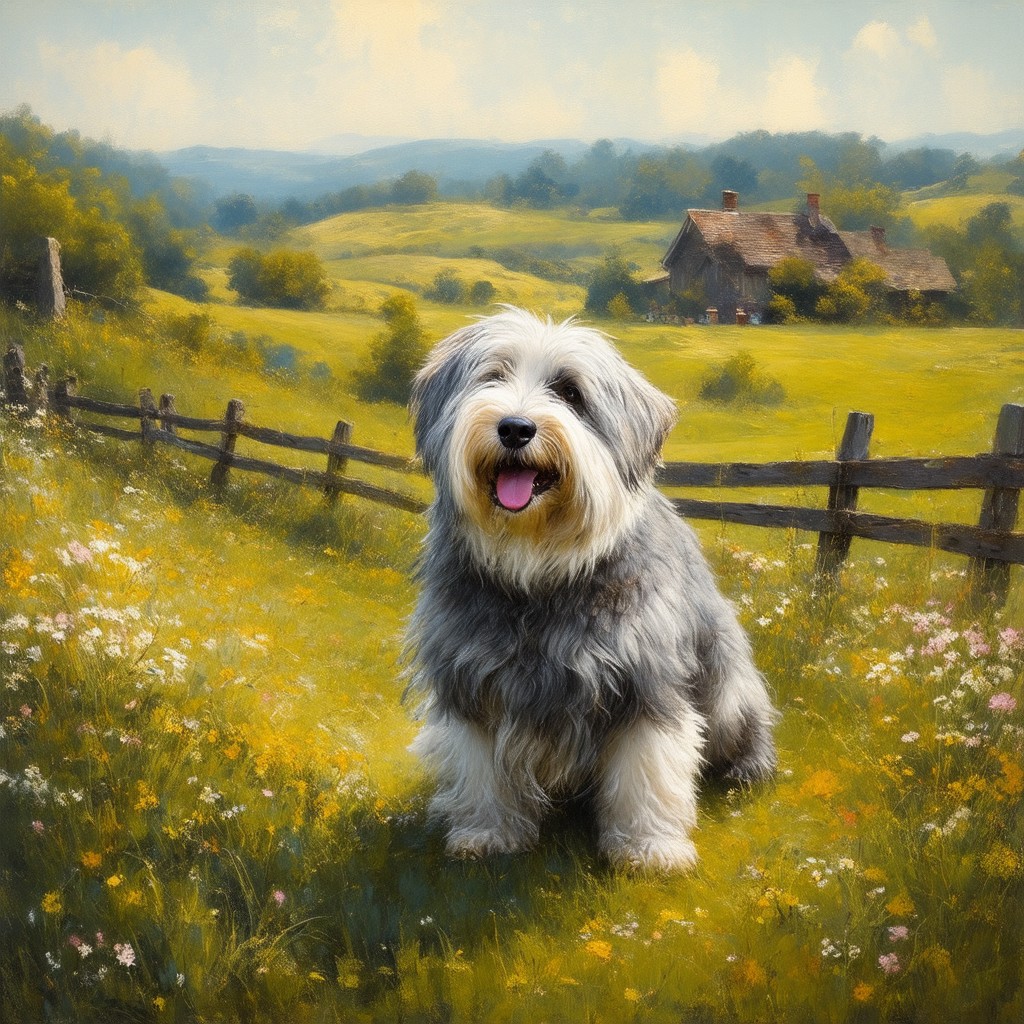
Pros and Cons of Owning an Old English Sheepdog
Owning an Old English Sheepdog can be a rewarding experience, but it’s essential to weigh the pros and cons before making a commitment. This breed is known for its affectionate nature and loyalty, yet there are several factors to consider that may influence your decision.
What are the cons of an Old English Sheepdog?
While Old English Sheepdogs are loving companions, they come with specific challenges that potential owners should be aware of:
- Not Ideal for Hot Climates: Old English Sheepdogs have a thick double coat that can make them uncomfortable in high temperatures. They are more suited to cooler climates, and overheating can lead to serious health issues.
- Vocalization: These dogs are known for being quite vocal. They may bark excessively, which can be a concern for owners in noise-sensitive environments or apartments.
- Space Requirements: Full-grown Old English Sheepdogs are large and require ample space to move around. They thrive in homes with yards rather than small apartments.
- Shedding and Mess: Their long fur requires regular grooming to prevent matting and excessive shedding. This can lead to a messy home environment if not maintained properly.
- Restrictions on Size: Due to their size, Old English Sheepdogs may not be allowed in certain housing situations or public spaces, limiting where you can take them.
- High Exercise Needs: These dogs are very active and require significant daily exercise. Without adequate physical activity, they can become bored and develop behavioral issues.
- Attention Seekers: Old English Sheepdogs are social animals that thrive on human interaction. They may experience separation anxiety if left alone for long periods, necessitating a commitment to companionship.
- Size Considerations: As one of the larger dog breeds, they can be intimidating to some people, which may affect social interactions in public settings.
- Health Concerns: Like many large breeds, Old English Sheepdogs are prone to certain health issues, including hip dysplasia and eye problems, which can lead to costly veterinary care.
- Training Challenges: Their independent nature can make training a challenge. Consistent, positive reinforcement methods are essential for effective training, which may require time and patience from the owner.
In summary, while Old English Sheepdogs are affectionate and loyal companions, potential owners should carefully consider these factors to ensure they can meet the breed’s needs effectively.
10 Reasons Not to Get an Old English Sheepdog
If you’re contemplating bringing an Old English Sheepdog into your home, here are ten reasons that might make you reconsider:
- They require a significant amount of grooming due to their long fur.
- They can be prone to health issues, leading to higher veterinary costs.
- They need a large living space to accommodate their size.
- They are not well-suited for hot climates, which can affect their health.
- They may bark excessively, which can be disruptive.
- They require a lot of exercise to stay healthy and happy.
- They can suffer from separation anxiety if left alone for long periods.
- Training can be challenging due to their independent nature.
- They may not be allowed in certain housing situations due to their size.
- They can be intimidating to some people, affecting social interactions.
Considering these points can help you make an informed decision about whether an Old English Sheepdog is the right fit for your lifestyle and living situation.
Maintenance and Care for English Sheepdogs
When considering the Old English Sheepdog, it’s essential to understand their maintenance and care requirements. These dogs are known for their affectionate nature, but they also come with specific needs that potential owners should be aware of.
Are English Sheepdogs High Maintenance?
Old English Sheepdogs are indeed considered high maintenance due to their specific grooming and care needs. Here are key aspects to consider:
- Grooming Requirements: Their double-layered coat consists of a soft undercoat and a longer, coarser outer coat. Regular grooming is essential—ideally, at least two to three times a week—to prevent mats and tangles. Professional grooming every few months is also recommended to maintain coat health.
- Exercise Needs: Old English Sheepdogs are active and energetic. They require daily exercise, including walks and playtime, to keep them physically and mentally stimulated. Lack of exercise can lead to behavioral issues.
- Health Considerations: This breed is prone to certain health issues, such as hip dysplasia and eye problems. Regular veterinary check-ups and a balanced diet are crucial for their overall well-being.
- Training and Socialization: Early training and socialization are important for Old English Sheepdogs. They are intelligent but can be stubborn, so consistent, positive reinforcement methods work best.
- Time Commitment: Owners should be prepared for a significant time commitment, not only for grooming and exercise but also for training and companionship. These dogs thrive on interaction with their families.
In summary, while Old English Sheepdogs are affectionate and loyal companions, they do require a dedicated owner who can meet their grooming, exercise, and training needs. For more detailed insights on dog care, resources like the American Kennel Club can provide valuable information.
Grooming Needs and Shedding of Old English Sheepdogs
The grooming needs of the Old English Sheepdog are significant due to their unique coat structure. This breed sheds moderately, with more noticeable shedding occurring during seasonal changes. Here are some important grooming tips:
- Regular Brushing: To manage shedding and keep their coat healthy, brush your Old English Sheepdog at least two to three times a week. This helps remove loose hair and prevents matting.
- Bathing: Bathe your sheepdog as needed, typically every few months or when they become particularly dirty. Use a gentle dog shampoo to avoid irritating their skin.
- Trimming: Regular trimming of the coat, especially around the paws and face, can help maintain a neat appearance and reduce the risk of mats.
- Professional Grooming: Consider scheduling professional grooming sessions every few months to ensure their coat remains in optimal condition.
Understanding the grooming needs and shedding patterns of Old English Sheepdogs is crucial for maintaining their health and appearance. For more information on dog grooming, visit VetStreet.
Living with an Old English Sheepdog
Can you leave an Old English Sheepdog alone?
Leaving an Old English Sheepdog alone can pose significant challenges due to their social nature and high intelligence. Here are key considerations:
1. **Separation Anxiety**: Old English Sheepdogs are prone to separation anxiety, which can lead to destructive behaviors such as chewing furniture or excessive barking. According to the American Kennel Club, this breed thrives on companionship and can become distressed when left alone for extended periods.
2. **Destructive Behavior**: When left alone, these dogs may engage in destructive activities, which can be a sign of boredom or anxiety. Providing mental stimulation through toys or puzzles can help mitigate this behavior.
3. **Training and Socialization**: Early training and socialization are crucial. Gradually increasing the time they spend alone can help them adjust. Positive reinforcement techniques can encourage calm behavior when left alone.
4. **Exercise Needs**: Old English Sheepdogs require regular exercise to maintain their physical and mental health. A well-exercised dog is less likely to develop anxiety or engage in destructive behaviors. Aim for at least an hour of exercise daily.
5. **Alternatives to Leaving Alone**: Consider alternatives such as doggy daycare or hiring a pet sitter if you need to be away for long periods. This can provide the social interaction they crave.
6. **Professional Guidance**: If separation anxiety becomes a significant issue, consulting with a professional dog trainer or a veterinarian can provide tailored strategies to help your dog cope.
In summary, while it is possible to leave an Old English Sheepdog alone, it requires careful planning and consideration of their emotional and physical needs to prevent anxiety and destructive behavior.
English Sheepdog temperament and behavior
The temperament of Old English Sheepdogs is one of their most appealing traits. Known for their friendly and gentle nature, these dogs are excellent companions for families and individuals alike. Here are some key aspects of their behavior:
1. **Affectionate and Loyal**: Old English Sheepdogs are known for their affectionate demeanor. They form strong bonds with their families and are often protective, making them great family pets.
2. **Intelligent and Trainable**: This breed is highly intelligent, which makes training relatively easy. However, they can also be independent thinkers, so consistent training methods and positive reinforcement are essential.
3. **Playful and Energetic**: Old English Sheepdogs have a playful spirit and require regular exercise to channel their energy. Engaging them in games and outdoor activities can help maintain their happiness and health.
4. **Good with Children and Other Pets**: Their gentle nature makes them suitable for homes with children and other animals. Early socialization is important to ensure they develop good manners and interactions with others.
5. **Vocalization**: While they are not excessive barkers, Old English Sheepdogs will bark to alert their owners of any unusual activity. This behavior can be managed through training.
Understanding the temperament and behavior of the Old English Sheepdog is crucial for creating a harmonious living environment. With the right care and attention, these dogs can be loving and loyal companions. For more information on the breed, visit the [American Kennel Club](https://www.akc.org/dog-breeds/old-english-sheepdog/).
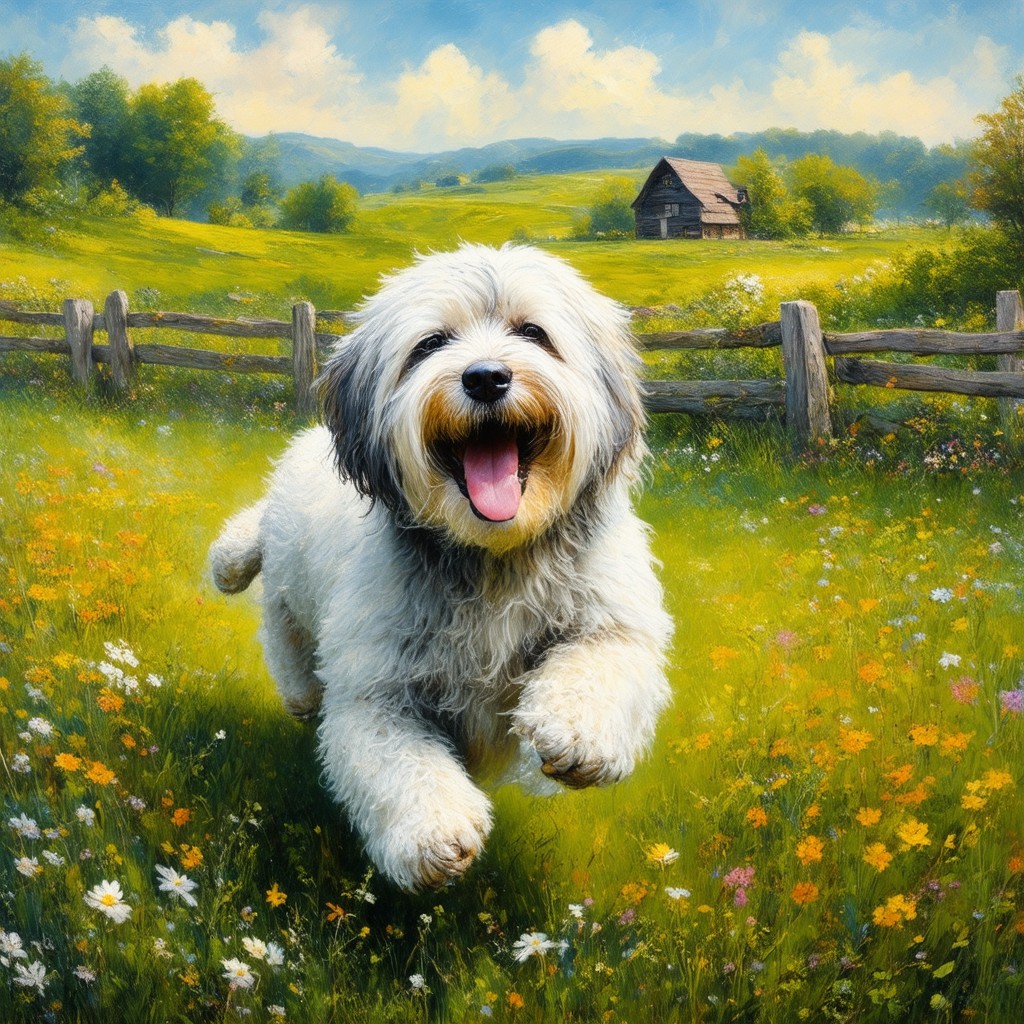
Barking and Communication in Sheepdogs
Understanding the barking and communication styles of the English Sheepdog is essential for potential owners. These dogs are known for their distinctive vocalizations, which can vary significantly among individuals. While they are not excessively vocal, their barking serves important functions, such as alerting their owners to unusual activity or expressing their needs.
Do Sheep Dogs Bark a Lot?
Yes, sheepdogs can be quite vocal, and the extent of their barking varies by breed. Here’s a detailed overview of some common sheepdog breeds and their barking tendencies:
- Old English Sheepdogs: Known for their distinctive, deep barks, Old English Sheepdogs may bark to alert their owners of unusual activity. While they are not excessively vocal, their bark is loud and resonant, often described as having a “pot-casse” ring. According to the American Kennel Club, this breed is generally gentle but can be protective when necessary.
- Shetland Sheepdogs (Shelties): Shelties are recognized for their vocal nature. Their barks are often shrill and can be quite loud. The barking level can vary significantly among individuals, with some Shelties being more prone to barking than others. A study published by Dogster highlights that while barking is a common trait, proper training and socialization can help manage excessive vocalization.
- Icelandic Sheepdogs: These dogs are naturally vocal and use barking as a means of communication, especially to alert their owners to potential threats. Their herding instincts drive them to bark, making them effective watchdogs. According to WebMD, their barking is a characteristic trait of the breed.
- Bearded Collies: While not known for excessive barking, Bearded Collies can become vocal if not adequately trained or exercised. Their intelligence and independent nature may lead to barking as a form of expression. Regular exercise and mental stimulation are crucial to minimize unnecessary barking.
- German Shepherds: Although not classified as sheepdogs, German Shepherds are known for their loud barks and protective instincts. They are often used as working dogs due to their alertness and ability to communicate through barking. Their vocal nature can be beneficial in guarding roles.
In conclusion, while sheepdogs can be vocal, the degree of barking varies by breed and individual temperament. Proper training, socialization, and regular exercise are essential to manage barking behavior effectively. For more insights on managing dog behavior, resources such as the American Kennel Club and Pet Adoption Resources provide valuable information on training techniques and breed characteristics.
Understanding the Vocalizations of Old English Sheepdogs
The Old English Sheepdog communicates through a variety of vocalizations beyond barking. These dogs may whine, growl, or even make unique sounds to express their feelings or alert their owners. Understanding these vocal cues is crucial for fostering a strong bond with your pet. Here are some common vocalizations:
- Whining: Often indicates a desire for attention or a need to go outside.
- Growling: Can signify discomfort or a warning, especially if the dog feels threatened.
- Barking: Used primarily for alerting owners to changes in their environment.
By recognizing and responding to these vocalizations, owners can better meet the needs of their Old English Sheepdog, ensuring a harmonious living environment. For more information on the Old English Sheepdog breed, visit the American Kennel Club.
Cuddly Companions: The Affectionate Nature of Sheepdogs
Are sheep dogs cuddly?
Yes, sheepdogs, including the Old English Sheepdog, are known for their cuddly nature. Their affectionate demeanor makes them excellent companions for families. Sheepdogs, particularly breeds like the Border Collie and German Shepherd, are characterized by their strong bond with humans, which is marked by a protective instinct and a desire for close interaction. Here are some key traits that highlight their cuddly nature:
- Gentle Temperament: Sheepdogs are typically gentle and patient, especially with children. Their nurturing behavior allows them to thrive in family environments, providing both companionship and protection.
- Affectionate Nature: These dogs often seek physical closeness, enjoying cuddles and petting. Their affectionate behavior can be attributed to their social nature, as they were bred to work closely with humans.
- Protective Instincts: While they are cuddly, sheepdogs also possess a strong protective instinct. They are alert and will watch over their family, making them both loving and vigilant companions.
- Socialization Needs: To ensure that sheepdogs remain cuddly and well-adjusted, early socialization and training are crucial. Engaging them in positive experiences with various people and environments helps reinforce their affectionate traits.
- Health and Well-being: Regular exercise and mental stimulation are essential for sheepdogs to maintain their happiness and cuddly demeanor. Activities like agility training or herding exercises can enhance their bond with family members.
In conclusion, sheepdogs are indeed cuddly, combining affection with a protective nature, making them ideal family pets. For more insights on dog behavior and training, consider consulting resources from the American Kennel Club or the ASPCA, which provide valuable information on fostering a loving relationship with your sheepdog.
The personality traits of Old English Sheepdogs
The Old English Sheepdog is renowned for its unique personality traits that contribute to its affectionate nature. Here are some defining characteristics:
- Playful and Energetic: Old English Sheepdogs are known for their playful spirit. They enjoy engaging in activities with their families, making them great companions for active households.
- Loyal and Devoted: This breed is incredibly loyal, often forming strong attachments to their owners. Their devotion makes them protective and attentive, ensuring a close bond.
- Intelligent and Trainable: Old English Sheepdogs are intelligent and eager to please, which makes training relatively straightforward. Their ability to learn commands quickly enhances their role as family pets.
- Affectionate with Family: They thrive on human interaction and often display their affection through cuddling and following their owners around the house.
- Good with Children: Their gentle temperament makes them excellent companions for children, as they are patient and playful.
Understanding these personality traits can help potential owners appreciate the Old English Sheepdog as a loving and cuddly addition to their family. For those considering adoption, resources like Pet Adoption Resources can provide valuable information on finding the right match.
English Sheepdog Pricing and Adoption
English Sheepdog price and cost considerations
The English Sheepdog, particularly the Old English Sheepdog, can vary significantly in price based on factors such as breeder reputation, location, and the dog’s lineage. On average, the Old English Sheepdog price ranges from $1,000 to $3,000. This cost typically includes initial vaccinations, health checks, and sometimes a starter kit with food and supplies. It’s essential to consider ongoing expenses such as grooming, food, and veterinary care, which can add up over time. Grooming is particularly crucial for this breed due to their long, thick coats, which require regular maintenance to prevent matting and skin issues.
Finding English Sheepdog breeders and rescue options
When looking for English Sheepdog breeders, it’s vital to choose reputable sources. The American Kennel Club provides a directory of certified breeders, ensuring that you find a responsible breeder who prioritizes the health and temperament of their dogs. Additionally, consider adopting from rescues or shelters. Organizations like Petfinder often have listings for Old English Sheepdog puppies and adults in need of homes. Adopting a dog not only saves a life but can also be a more cost-effective option compared to purchasing from breeders. Always ensure that any Old English Sheepdog you consider has been properly assessed for health and temperament.

